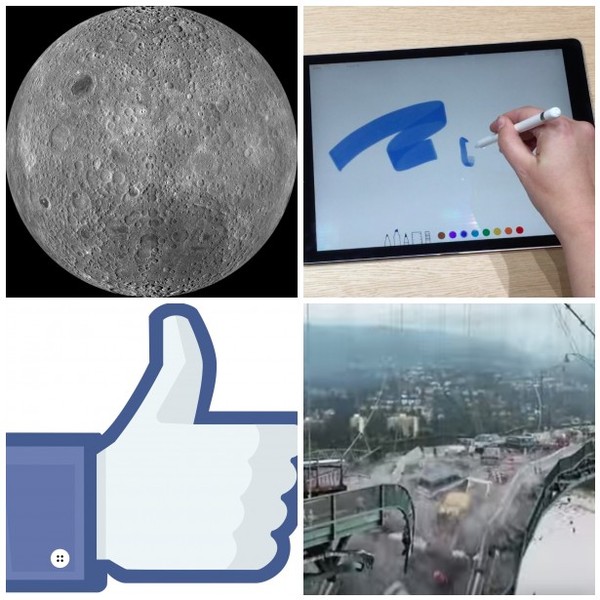Geeks State "To the Moon, iPad Pro"

External features of the world effect us internally, why does the moon have more creators on the “dark side”, our thoughts on the iPad Pro, and a bit about bridges.
Mobile, ecosystems and the death of PCs
One of the ways that tech progresses is in generational changes in scale. We had mainframes, then minicomputers, then workstations and PCs, and now mobile, and each generation brings a step change in scale. That scale means that it becomes the new ecosystem and the new centre for innovation. iOS and Android smartphones alone are now outselling PCs 5:1, not even counting tablets, and that will rise to closer to 10:1 in the next few years. So, this is the new scale ecosystem.
Each previous generation first gained scale and capability by creating a whole new market, and then, some time later, reached the point that it could take share from the previous generation. PCs were sold just as PCs for a decade or more before they could kill workstations and take over data centres. Does mobile do the same? Does mobile kill PCs, and if so how? Or will you always need a PC to do ‘real work’?
The Moon's Two Sides Look So Different Thanks To 4.5 Billion-Year-Old Physics
In particular, there are two main features that even a casual visual inspection will reveal:
That it’s heavily cratered, especially in the lighter-colored areas. Many cratered regions include small craters inside medium-sized craters inside giant craters. And…
That it has these large areas that are much darker than the rest, known as maria (latin for “seas”), which have relatively few and mostly smaller craters in them. These regions are notable for being a significantly different color/reflectivity than the majority of the Moon.
The same side of the Moon always faces us, but different portions of the lunar hemisphere get illuminated throughout the month, dependent on the relative positions of the Earth, Moon and Sun.
Suspension Bridges of Disbelief
Suspension bridges are far and away the target of choice in America’s action blockbusters. In just the past three years, the Golden Gate Bridge has been destroyed by a Kaiju, Godzilla, a Skynet-initiated nuclear blast, and a tsunami. Americans don’t build real bridges anymore, or maintain the ones that we have, but we sure love to blow them up in movies.
However, in all of the planning, storyboarding, rendering, and compositing of these special effects shots, nobody pauses to consider how suspension bridges actually behave. I can accept messianic alien orphan superheroes and skyscraper-sized battle robots, but I will not stand for inaccurate portrayals of structural mechanics. It’s fine to bend the laws of physics if the plot warrants it, but most suspension bridge mistakes are so needless and stupid that their only function seems to be irritating engineers.
Thing Explainer: Complicated Stuff in Simple Words: Randall Munroe
Have you ever tried to learn more about some incredible thing, only to be frustrated by incomprehensible jargon? Randall Munroe is here to help. In Thing Explainer, he uses line drawings and only the thousand (or, rather, “ten hundred”) most common words to provide simple explanations for some of the most interesting stuff there is.
xkcd: Web Comic
A webcomic of romance,
sarcasm, math, and language.

